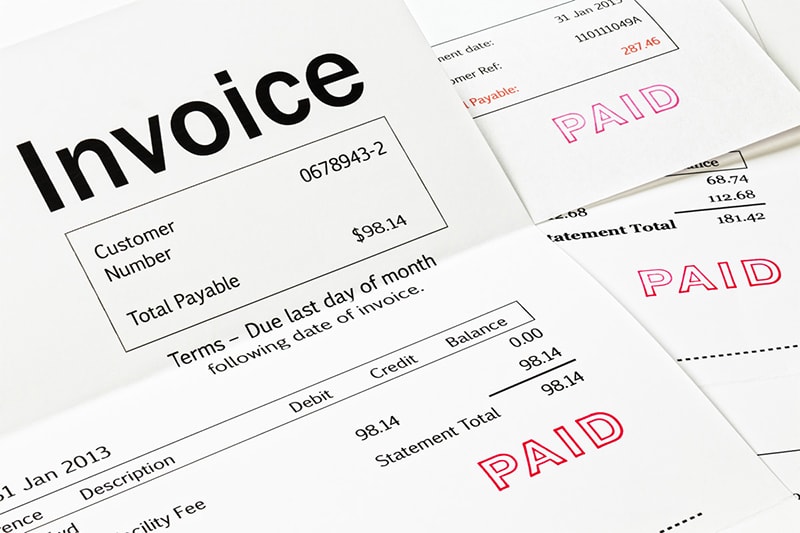
Cash flow relies on getting paid on time, and preferably early. One tactic for improving cash flow is to look at the balance in accounts receivable and understand the Days Sales Outstanding (DSO) ratio. The DSO is measured in days and shows how many average days’ sales are awaiting payment. In the hands of a knowledgeable business owner it tells us how fast sales are collected, the lower the result the better. Here’s how to calculate it:
DSO = Accounts receivable balance / average sales per day
Whether the DSO measure is ‘good’ or not varies by industry as well as the payment terms. If invoices are requested due in 30 days and the DSO is 30-35 days or less, that’s pretty good. If invoices are scheduled for net 10 and the DSO is 60 days, then it’s probably time to consider a more aggressive collection policy to speed up cash flow.
Here are some tips to reduce DSO and get paid faster:
1. Send invoices as soon as possible.
In smaller companies, the person generating invoices may have several responsibilities. Preparing and sending invoices must be a priority task. Often the first problem with poor cash flow is a slow and inefficient invoicing process. If invoices are generated a week or two late, so is the collection of payment.
2. Create easy-to-understand invoices.
Make sure invoices are accurate and clear. Make important information prominent: whom to make the check out to, where to mail it, the due date, and the amount due. All of these features should be easy to find on the invoice.
3. Provide adequate detail.
If a customer has to add information to an invoice to facilitate payment, it creates a delay in processing. Ask customers what they require on invoices, even though it may take extra time to inquire and provide the information. Avoid the need to re-invoice a customer due to missing or incorrect information. (This is a common delaying tactic we see and one we encourage all of our clients to proactively combat.) Invoice detail questions may include:
- Is a purchase order (P.O.) number required or is an invoice number enough?
- Is an Employer Identification Number (EIN) needed?
- How much detail is needed or will a general description suffice?
- Is there any individual I must direct the invoice to?
4. Consider discounts.
A common discount term is 2/10, net 30. This means the customer can take two percent off their invoice if they pay in 10 days; otherwise, they owe the whole amount in 30 days. When doing business with large companies, discounts are often required by policy and this can speed up payments from them.
5. Send invoices electronically.
Letters still get lost or delayed in the mail. Sending electronically speeds up delivery and reliability and saves on postage. It also makes following up easy since forwarding the original email proves date and time that the first invoice was sent.
6. Include an option for electronic payments.
Electronic payments make it easy for customers to pay and may result in faster payment than paper checks. Customers may want to pay by credit card, PayPal, or by accessing a payment link on the invoice. Some accounting systems, such as Intuit Payment Network or Freshbooks include the option for a payment link. Going paperless with invoicing as well as the payment process can speed up the entire billing cycle. It can also eliminate trips to the bank.
7. Charge a portion of the amount due up front.
When a company has cash outflow for materials or other out-of-pocket expenses, it’s not unusual to request a portion of the total due as an upfront cost. Then, only the remaining balance due affects Days Sales Outstanding.
If a company employs all of the above tactics and some customers continue to be ‘slow pay,’ then it may be necessary to have a conversation with the client contact to see what can be done to speed up the process. Also, evaluating how profitable the customer is to the business will clarify how important it is to wait for slow pay vs. re-structure or terminate the relationship. Understanding all sides of the story goes a long way in building the business and keeping customer relationships.

Should I Use The Same Company for CFO and Bookkeeping Services or Keep Them Separate?
by Lucrum Staff Is your company considering outsourcing fractional CFO and bookkeeping services to two different companies? Using a single provider for …

Do I Need a Fractional CFO, Interim CFO or Part-Time CFO? What’s the Difference?
by: Lucrum Staff As a business scales, it reaches a point where more financial expertise is needed than existing resources can provide. …

When To Politely Turn Down A New Business Opportunity
By: Jeff Heybruck New business opportunities are, for good reason, exciting. But wise business leaders are able to take off the rose-colored …
